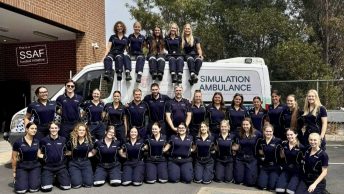This post is over three years old, the information may be outdated.
You have just submitted an assessment which you put hours of hard work, research and dedication into. There is nothing else you can do other than wait for that mark back… but how does marking really work?
This question is tough to answer as every lecturer marks differently, however we have pulled the most common steps together for you:
1. Subject outline
Thinking back to when you started this assessment, you probably referred to the subject outline for the word count, main points, language and format.
It also contains the marking rubric that lecturers use for each assessment. Ultimately, it is this rubric that will determine the mark you receive for your assessment.
2. Turnitin
Depending on the assessment requirements, you may have already submitted your work to Turnitin (a plagiarism detection program). If not, the marker may submit it on your behalf.
Once the document has been returned, the marker will determine whether the similarity score is acceptable or not. Marks may be deducted if your score is too high.
3. Tick the boxes
The marker is then likely to briefly check the format of your assessment for key requirements as stated in the subject outline. This could include cover page, contents page, reference list and relevant headings or subheadings.
The presentation of your assessment is often also inspected at this stage. The marker may write comments regarding the presentation and provide this section of the marking rubric with a tentative mark.
4. Final mark
After briefly checking the format, the marker is likely to read your assessment. Sometimes, he or she read individual sections or the entire document may be read at once. Comments are often made during this reading stage.
After reading your work, the marker will refer to the marking rubric where they assess each criterion against your work and give a score for each. These scores will be added together to provide you with a total grade for your assessment.
Remember
Sometimes, assessments will be remarked by different staff. It may be random or those within a standard of performance, such as all assessments marked as failed or all marked as high distinction. This is called moderation and will allow any marking discrepancies to be addressed.
Once all assessments have been marked, the maker will return your work. You can then read the comments and use these suggestions to improve in the future.
Just remember, all marking is completed off the rubric, so refer to it in order to achieve the best mark possible!










